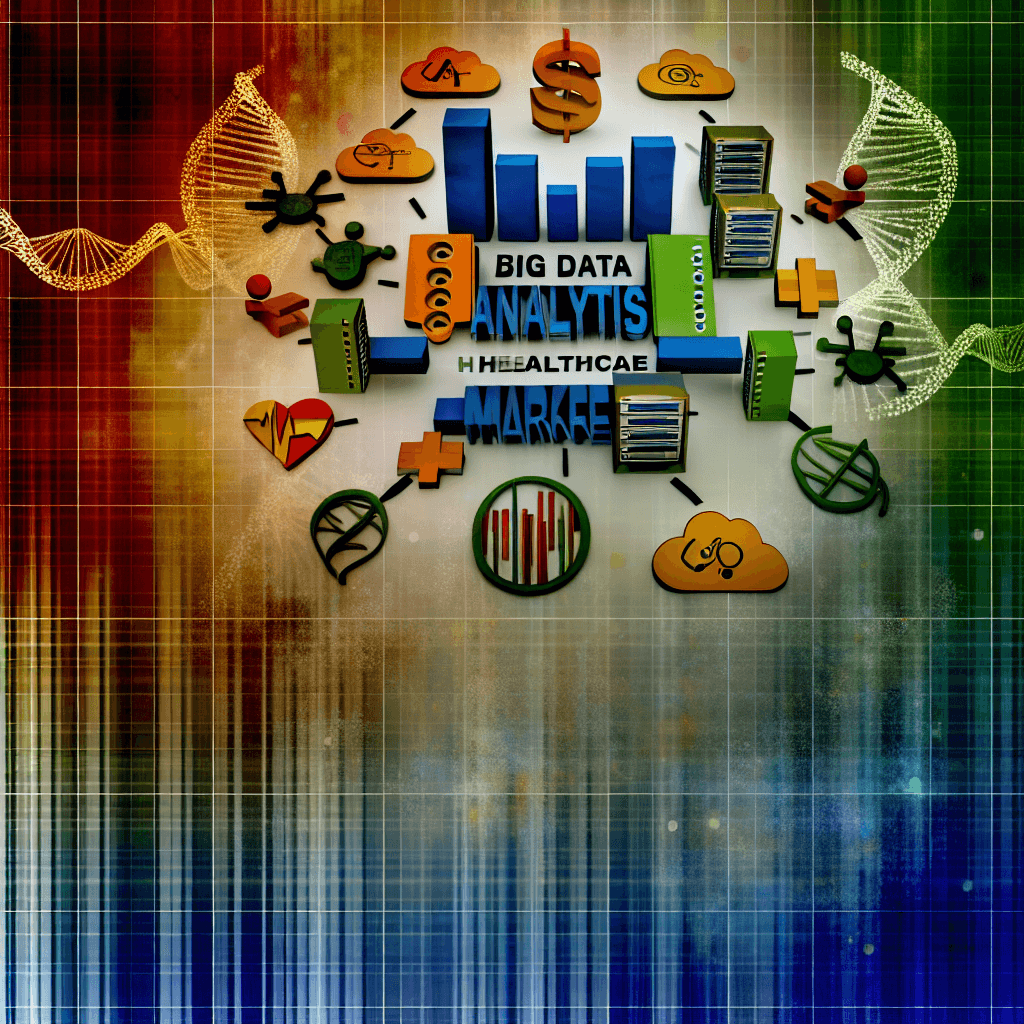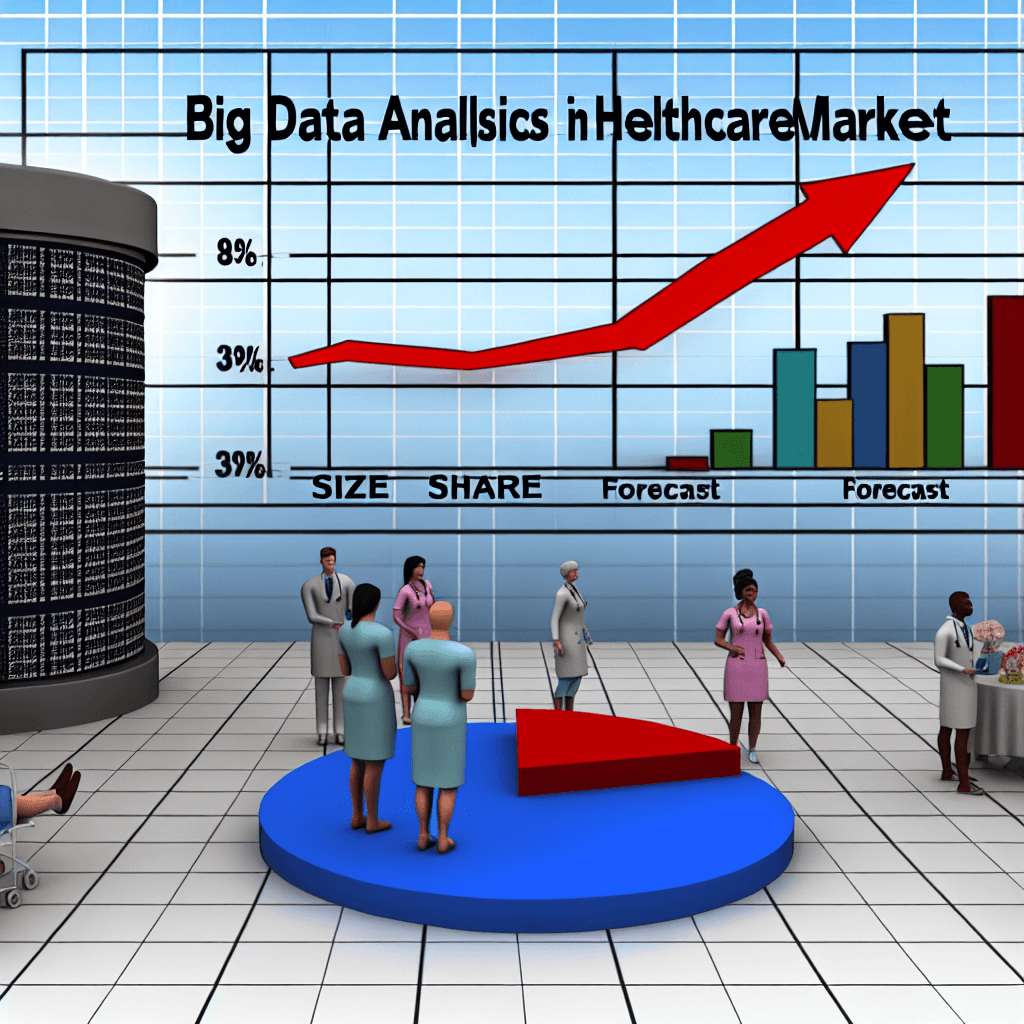Explore the Big Data Analytics in Healthcare Market: trends, size, share, and forecasts. Unlock insights for strategic growth.
Big Data Analytics In Healthcare Market Size, Share, & Forecast

Table of Contents
- Big Data Analytics in Healthcare: Market Size, Share, & Forecast
- Understanding Big Data Analytics in Healthcare
- Current Market Overview
- Market Segmentation
- Type of Analytics
- Component
- Deployment
- Application
- End-User
- Geographical Insights
- Impact of Big Data Analytics on Healthcare
- Improved Patient Outcomes
- Operational Efficiency
- Research and Development
- Fraud Detection and Risk Management
- Case Studies and Examples
- Mayo Clinic
- Kaiser Permanente
- Future Outlook and Trends
- Conclusion
Big Data Analytics in Healthcare: Market Size, Share, & Forecast

The integration of big data analytics into the healthcare sector has revolutionized how medical data is analyzed, interpreted, and utilized. This transformative technology has not only improved patient outcomes but also significantly enhanced operational efficiencies across healthcare organizations. This article delves into the current market size, share, and future forecasts of big data analytics in healthcare, providing a comprehensive overview of its impact and potential.
Understanding Big Data Analytics in Healthcare
Big data analytics involves the examination of large and varied data sets — or big data — to uncover hidden patterns, unknown correlations, market trends, customer preferences, and other useful information. In healthcare, this translates to the analysis of vast amounts of patient data to aid in decision-making processes. The application of big data analytics in healthcare spans various functions, including clinical decision support, patient care management, research, and financial management.
Current Market Overview
The global market for big data analytics in healthcare has witnessed substantial growth over the past few years. This growth is driven by several factors:
- Increasing volume of healthcare data
- Advancements in analytical technologies
- Growing demand for personalized medicine
- Need for cost-effective healthcare solutions
According to a report by Grand View Research, the global big data analytics in healthcare market was valued at approximately USD 22.6 billion in 2020 and is expected to grow at a compound annual growth rate (CAGR) of 19.1% from 2021 to 2028.
Market Segmentation
The big data analytics in healthcare market can be segmented based on various factors:
Type of Analytics
- Descriptive Analytics
- Predictive Analytics
- Prescriptive Analytics
Component
- Software
- Services
Deployment
- On-premise
- Cloud-based
Application
- Clinical Data Analytics
- Financial Analytics
- Operational Analytics
End-User
- Hospitals and Clinics
- Finance & Insurance Agencies
- Research Organizations
Geographical Insights
The North American region holds the largest share of the big data analytics in healthcare market, attributed to the advanced healthcare infrastructure, high adoption of new technologies, and significant investments in health tech solutions. Europe follows closely, driven by increasing healthcare expenditure and government initiatives towards healthcare reform. The Asia-Pacific region is expected to witness the fastest growth due to rising healthcare awareness, increasing investments in healthcare infrastructure, and burgeoning demand for advanced analytical tools in countries like China and India.
Impact of Big Data Analytics on Healthcare
Big data analytics has had a profound impact on the healthcare industry, influencing various aspects:
Improved Patient Outcomes
By analyzing vast amounts of patient data, healthcare providers can identify the most effective treatments, predict outcomes, and personalize patient care plans, leading to better patient outcomes.
Operational Efficiency
Healthcare facilities utilize big data analytics to optimize their operations, reduce costs, and improve service delivery, thereby enhancing overall efficiency.
Research and Development
Data analytics significantly accelerates research processes by providing insights that help in the development of new drugs and therapies.
Fraud Detection and Risk Management
Analytics tools can detect patterns indicative of fraud and other risks, thereby safeguarding financial interests and ensuring compliance with regulations.
Case Studies and Examples
Several leading healthcare organizations have successfully implemented big data analytics to enhance their operations and patient care:
Mayo Clinic
Mayo Clinic employs predictive analytics to improve patient outcomes by predicting individual risks and personalizing patient care plans accordingly.
Kaiser Permanente
Kaiser Permanente uses big data to manage clinical operations and patient care more efficiently. Their data-driven strategies have significantly reduced patient mortality rates and hospital readmissions.
Future Outlook and Trends
The future of big data analytics in healthcare looks promising with several trends likely to influence the market:
- Increased adoption of machine learning and artificial intelligence
- Greater emphasis on predictive and prescriptive analytics
- Expansion of telemedicine and remote patient monitoring
- Enhanced focus on cybersecurity and data privacy
As technology continues to evolve, the scope and impact of big data analytics in healthcare are expected to grow, leading to more innovative solutions and improved healthcare delivery.
Conclusion
Big data analytics in healthcare is a rapidly growing field that promises to transform the landscape of healthcare delivery. With its ability to process vast amounts of data and provide actionable insights, it plays a crucial role in enhancing patient outcomes, reducing costs, and improving operational efficiencies. As the market continues to expand, healthcare providers worldwide are poised to adopt these advanced analytical tools, ensuring a brighter, more efficient future for healthcare services.








